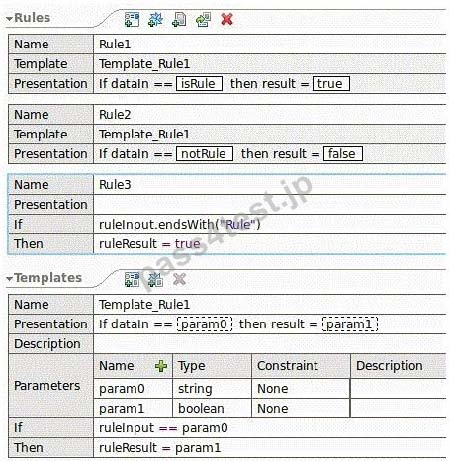An integration developer is planning a modular design to support the implementation of a large application. Which of the following BEST describes the approach that should be taken by the integration developer while designing the solution in order to achieve module reuse and application maintainability over time?
A. Create multiple modules and libraries to expose the functions that compose the application as separate services. The services should be selected based on the relative module sizes and complexity of the functions provided.
B. Use separate modules to expose the logical units of function as separate services and use a single library to hold the commonly used data types, interfaces, and transformation artifacts.
C. Determine which components should be logically deployed on separate servers based on the performance requirements of the application and package the code into modules so that there will be one module per server in the infrastructure.
D. Identify the portions of the code that are most likely to be reused and deploy each as a separate logical unit into multiple libraries as independent services. Use a single module to invoke the services deployed in the libraries.
正解:B
質問 2:
Refer to the Exhibit.

What of the following is a TRUE statement about how the rule set will execute?
A. A build error will occur because Rule3 does not implement the Rule Template from which Rule1 and Rule2 were created.
B. Rule3 will never execute because Rule1 or Rule2 will be true and the group will finish before Rule3 is reached.
C. A build error will occur because the Rule3 logic overlaps with the other two rules.
D. The result of sending in either "isRule" or "notRule" will always be true since Rule3 will execute last.
正解:D
質問 3:
Refer to the Exhibit.

Assume some_adapter is a valid JCA adapter. An integration developer needs to export ModuleA for server deployment, which of the following BEST describes the result of this operation?
A. The wizard generates an EAR file with one JAR file for the module, one JAR file for the library, a RAR file for the adapter, and a web application archive.
B. The wizard generates two EAR files. The first containing two JAR files for the module and the library; the second containing the files for the adapter.
C. The wizard generates two EAR files. The first containing two JAR files for the module and the library; the second containing the files for the adapter.
D. The wizard generates an EAR file with one JAR file for the module, one JAR file for the library, and a RAR file for the adapter.
E. The integration developer cannot create this configuration because both On Build Path and Deploy with Module are deselected.
F. The wizard generates an EAR file with one JAR file for the module, one JAR file for the library, a RAR file for the adapter, and a web application archive.
正解:E
質問 4:
Refer to the Exhibit.

accounts.movements has been initialized as a list of strings with these values {"0","0","0","0","0"}. Which of the following statements about this scenario is TRUE?
A. The snippet enters into an infinite loop.
B. The snippet has a compilation error.
C. After the execution of the snippet, accounts.movements has these values {"0","1","1","0","0"}.
D. After the execution of the snippet, accounts.movements has these values {"0","1","1","1","0"}.
正解:A
質問 5:
An integration developer is designing a business process where speed and performance are very important. Two independent process intensive Web services are called as part of the business flow. The process logic consists of assign activities plus the Web services invocations.
Which of the following is the BEST way to meet the performance requirements? The integration designer needs to design the business process as a:
A. long-running process and invoke the two Web services in a For Each loop.
B. microflow and invoke the two Web services in a sequence scope.
C. long-running process and invoke the two Web services in a parallel activities scope.
D. microflow and invoke the two Web services in a parallel activities scope.
正解:C
質問 6:
Refer to the exhibit.

A developer using the interface in the exhibit is facing a requirements change - the start operation needs to be a one-way operation that uses the existing inputs. Which of the following is the BEST way to make the change?
A. Add a new one-way operation to the interface and ignore the existing operation.
B. Click on the operation name and choose "Alt+Shift+R" to refactor the operation.
C. Delete the interface and create a new interface with the same name, namespace, and operation name with a one-way operation.
D. Right-click on the operation and choose "Change to One Way Operation" from the context menu.
正解:D
質問 7:
Refer to the exhibit.

An integration developer needs to have a user interaction to send the event message.?
The BEST way to accomplish this is to use:
A. an inline human task.
B. an invocation task
C. a to-do task.
D. a collaboration task
正解:B
質問 8:
Employee data must be synchronized between Application A and Application B whenever an employee data is updated. However, the data format of Application A and B is different so that the employee data must be mediated through a data map. Application A uses a three-letter country code while Application B spells out the country name. (For example, "GBR" in Application A maps to "United Kingdom" in Application B.) The responsible data map must convert the three-letter country code to full country name before sending the employee data from Application A to Application B.
Which of the following actions will BEST accomplish this task?
A. Use Lookup transformation which calls a static relationship.
B. Leave the state field blank, and have Application B to implement a method to convert the country code.
C. Use XPath expression to assign the country name.
D. Implement a selector and invoke it from the data map.
正解:A






 0 お客様のコメント
0 お客様のコメント